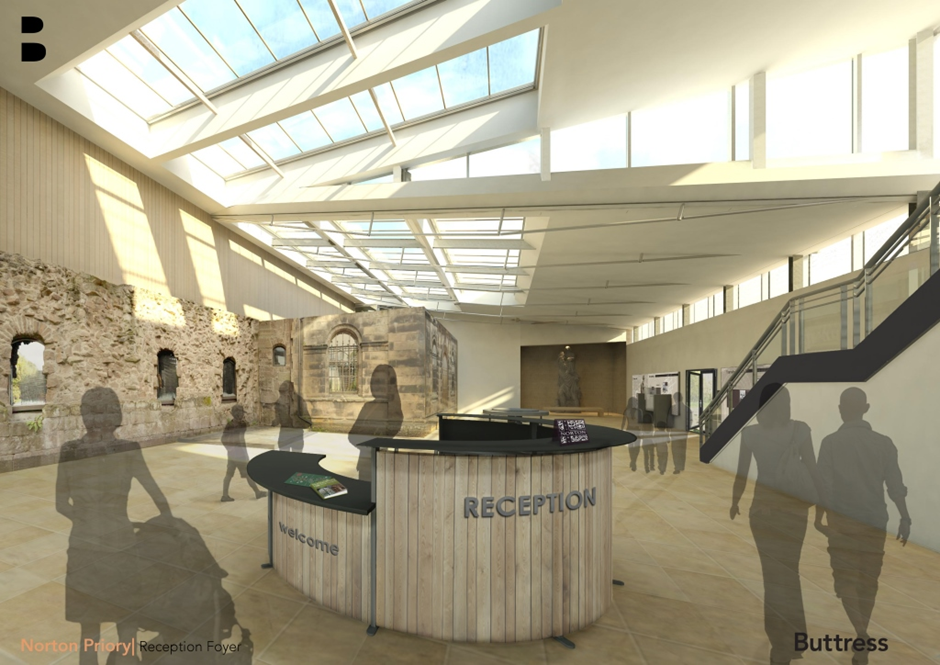
As you approach Runcorn’s Norton Priory site, tucked behind a modern industrial estate, there is very little clue of this 12th century monastery site’s historical significance. Currently undergoing significant redevelopment as part of a HLF funded capital project ‘Monastery to Museum 900’, the priory is due to reopen its doors this coming August showcasing a fully redeveloped museum and newly conserved undercroft.
As the most excavated medieval monastic site in Europe, Norton Priory boasts some of the most incredible stories and objects which will be displayed more fully than was previously possible in new innovative first floor viewing gallery which will help visitors better understand the ruins while also carefully preserving the grade 1 listed 12th century undercroft to properly demonstrate the sites national historical significance.
Although visitors are obviously an important focus of Norton Priory’s ‘Monastery to Museum 900’ development project, one of the aims of the £4.5m redevelopment is also to help with the Priory’s future sustainability. Engaging larger audiences will be integral to this, with visitors to the museum anticipated to increase by 60%, greater audiences will of course increase admission and secondary spend income. In consultation with local teachers, the project will also double the size of the learning suite to provide facilities for larger school groups helping to deal with the rising costs in transport and further pressures on their pupils time in school.
Central to all of the decisions made during the project’s development was the need for flexibility, particularly for providing means to offer event, wedding and conference facilities. The learning suite will not only double in size, it will also have a moveable partition allowing for the space to seat 100 people theatre style. In one of the new exhibition spaces, an area has been opened to provide an activity space designed to demonstrate traditional skills, linked to the Priory’s traditional skills programme which provides another source of income.
Although Norton Priory’s redevelopment project concentrates greatly on visitors experience, there are also significant development taking place behind the scenes. In recent years, the Priory has developed significant research partnerships with the Universities of Liverpool, Lancaster, Leicester, Liverpool John Moores, Nottingham, Birmingham and Sheffield. These partnerships have not only helped to better understand the Priory’s collections, but they have also provided financial opportunities. Frank Hargrave, Norton Priory’s Director explained:
“We have found that [our partnerships with Universities] has increased our profile with the media and many of the research areas have attracted significant funding not limited specifically to research time but to outputs such as exhibitions, matchfunding for the capital project and even for core costs and new revenues streams.”
Given the continuous squeezing of local government budgets, it feels important to note that Norton Priory’s redevelopment will not only demonstrate the historical significance of this important monastery site, it will also put in place a solid structure for in-house income generation to help secure the museum’s future.
